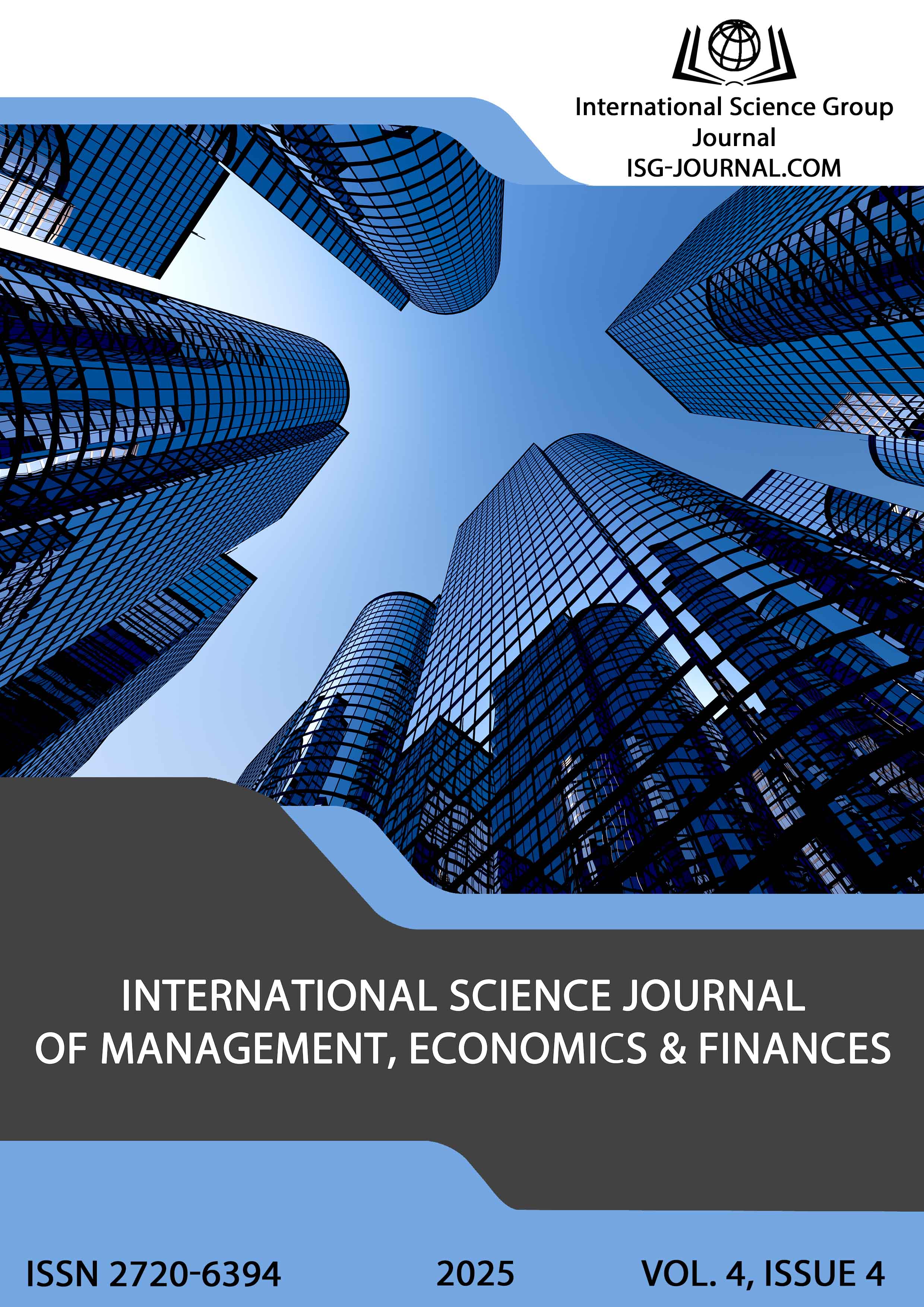Transmorphance of socio-technical systems: A conceptual framework for adaptive security
DOI:
https://doi.org/10.46299/j.isjmef.20250404.07Keywords:
socio-technical systems, complex systems, transmorphance, adaptation, emergence, self-organization, resilience, robustness, information security management, adaptive potentialAbstract
The article presents a new conceptual framework for analyzing and ensuring the security of socio-technical systems based on the fundamental difference between functionally stable and evolutionarily dynamic systems. Unlike the former, which are organized around clearly defined functions, the latter are structured by ontological invariants and exhibit the properties of complex adaptive systems: nonlinear dynamics, emergence, self-organization, and path dependence. It has been shown that traditional approaches to ensuring the security of socio-technical systems: robustness, survivability, and resilience - are proving insufficiently effective in an era of growing complexity of such systems and increasing environmental volatility. These approaches are primarily focused on maintaining or restoring the initial state of the system, rather than ensuring the possibility of its fundamental transformation. The growing interconnectedness and dynamic nature of current socio-technical systems require new theoretical foundations capable of accounting for radical structural changes while preserving the identity of the system. Based on five key axioms of complex systems: non-locality and multiplicity of components, emergence, nonlinear dynamics and path dependence, self-organization and adaptation, the authors introduce the concept of transmorphance – the ability of evolving socio-technical systems to survive radical structural transformations while preserving the ontological invariants that define the identity of the system. Transmorphance conceptually surpasses existing approaches by offering a paradigm of adaptation through change of form rather than preservation. The concept is empirically confirmed by a comprehensive analysis of the evolution of Jewish statehood over nearly three millennia. The analysis reveals key mechanisms of transmorphance, including the evolution from centralized territorial structures to distributed networks of autonomous communities linked by common legal norms and symbolic codes. Comparative analysis allows us to distinguish transmorphance from related concepts, in particular from antifragility and adaptive capacity from resilience literature. While antifragility focuses on extracting benefits from volatility within existing structural forms, transmorphance implies fundamental morphological transformations. Unlike adaptive capacity, which usually implies gradual optimization, transmorphance involves discrete transformations similar to phase transitions that change the basic paradigm of the system's functioning. The proposed approach expands the theoretical foundations of socio-technical system security management and offers new adaptation strategies in an era of high systemic volatility. Practical implementation of the theory includes the need to increase the adaptive potential of such systems and develop adaptive mechanisms capable of using crises as opportunities for systemic evolution.References
Carmichael, T., Hadžikadić, M. (2019). The Fundamentals of Complex Adaptive Systems. In: Carmichael, T., Collins, A., Hadžikadić, M. (eds) Complex Adaptive Systems. Understanding Complex Systems. Springer, Cham. https://doi.org/10.1007/978-3-030-20309-2_1
Keller, Evelyn Fox. "Organisms, Machines, and Thunderstorms: A History of Self-Organization, Part Two. Complexity, Emergence, and Stable Attractors." Historical Studies in the Natural Sciences 39.1 (2009): 1-31. http://dx.doi.org/10.1525/hsns.2009.39.1.1
Holden LM. Complex adaptive systems: concept analysis. J Adv Nurs. 2005 Dec;52(6):651-7. doi: 10.1111/j.1365-2648.2005.03638.x. PMID: 16313378.
Thurner, S., Hanel, R., & Klimek, P. (2018). Introduction to the Theory of Complex Systems. Oxford University Press.
Mitchell, M. (2023). Complexity: A Guided Tour. Oxford Academic. https://doi.org/10.1093/oso/9780195124415.001.0001
M. De Domenico, D. Brockmann, C. Camargo, C. Gershenson, D. Goldsmith, S. Jeschonnek, L. Kay, S. Nichele, J.R. Nicolás, T. Schmickl, M. Stella, J. Brandoff, A.J. Martínez Salinas, H. Sayama. Complexity Explained (2019). DOI 10.17605/OSF.IO/TQGNW
Heylighen, F. (1989). Self-Organization, Emergence and the Architecture of Complexity. In in: Proceedings of the 1st European Conference on System Science, (AFCET, Paris), p. 23-32. http://pespmc1.vub.ac.be/Papers/SelfArchCom.pdf
Mahoney, J. (2000). Path Dependence in Historical Sociology. Theory and Society, 29(4), 507–548. http://www.jstor.org/stable/3108585
Anzola, D., Barbrook-Johnson, P. & Cano, J.I. Self-organization and social science. Comput Math Organ Theory 23, 221–257 (2017). https://doi.org/10.1007/s10588-016-9224-2
Tzafestas, S.G. (2018). Adaptation, Complexity, and Complex Adaptive Systems. In: Energy, Information, Feedback, Adaptation, and Self-organization. Intelligent Systems, Control and Automation: Science and Engineering, vol 90. Springer, Cham. https://doi.org/10.1007/978-3-319-66999-1_8
Holland, J. H. (1992). Complex Adaptive Systems. Daedalus, 121(1), 17–30. http://www.jstor.org/stable/20025416
Munoz, A., Billsberry, J., & Ambrosini, V. (2022). Resilience, robustness, and antifragility: Towards an appreciation of distinct organizational responses to adversity. International Journal of Management Reviews, 24(2), 181–187. https://doi.org/10.1111/ijmr.12289.
Taleb, N. N. (2012). Antifragile: Things That Gain from Disorder. Random House, New York.
Gallopín, G. C. (2006). Linkages between vulnerability, resilience, and adaptive capacity. Global Environmental Change, 16(3), 293-303. https://doi.org/10.1016/j.gloenvcha.2006.02.004
Scharte, B. (2024). The need for general adaptive capacity - Discussing resilience with complex adaptive systems theory. Risk Analysis, 44(8), 1847-1864. https://doi.org/10.1111/risa.17676
Downloads
Published
How to Cite
Issue
Section
License
Copyright (c) 2025 Volodymyr Mokhor, Fedir Korobeynikov

This work is licensed under a Creative Commons Attribution 4.0 International License.






